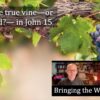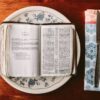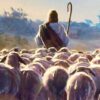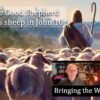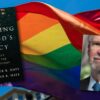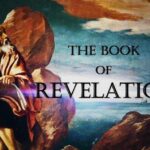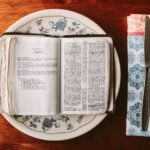My most recent publications are:
- ‘The reimagining of theological time: Revelation’s use of the Old Testament’ in The Scriptures in the Book of Revelation and Apocalyptic Literature.
- ‘The genre of Revelation’ (including two new proposals!) in The Apocalypse of John amongst its Critics.
- The New Testament’s Vision of Mission Grove booklet, exploring key themes from the teaching and practice of Jesus.
- The Practice of Evangelical Spirituality Grove booklet, looking at the seven dimensions of biblical discipleship.
- Exploring the New Testament, Volume Two: Letters and Revelation third edition, fully updated, revised and expanded.
- Revelation: Faithfulness in Testing Times, a series of six studies for individuals or groups.
- Revelation, the Tyndale New Testament Commentary from IVP. (If you order from an online store, make sure you choose mine, not the previous edition by Leon Morris!)
My other recent publications include:
- How to Interpret the Bible: four essential questions (Grove, 2017)
- Being Messy, Being Church (Bible Reading Fellowship, 2017)
- Kingdom, Hope and the End of the World (Grove, 2016)
- The Book of Revelation: currents in British research (Mohr Siebeck, WUNT, 2015)
- Evangelical Leadership: Challenges and Opportunities (Grove, 2016)
How can we read the Book of Revelation well today?
Last week I visited Vintage City Church in Fort Collins, Colorado, to talk about the Book of Revelation over the weekend and preach in their Sunday services. Vintage City Church is a really interesting place, where the team are committed to engaging with the work of the Spirit amongst them, thinking well about the Christian faith, being deeply rooted in Scripture, and committed to practical care and engagement with the community around them.
As part of my contribution, I recorded this Q and A session on Revelation with Dustin Scott, Senior Associate Pastor for Youth at the church, addressing some key questions about reading the book. Here is a summary of his questions and my answers, though there is more detail in the conversation.
1. If I were reading the Book of Revelation for the first time, where (and how) would you recommend I begin?
First, I would be very glad that you are reading it at all, since many people avoid it—either because they think it is too disturbing, or because it is too difficult to read.
But it is important to read it as a whole book, rather than select either the high points or focus on the dark images. Revelation functions a bit like paintings that make use of chiaroscuro, in which there is a strong contrast between the light and the dark parts of the painting. Its effect is not just found in the dark and light parts, but in the contrast between the two. Revelation teaches us through the contrast between the chaos of the world around us and the sovereignty of God on the throne.
Secondly, it is important to read it with the whole people of God. Revelation is unusual in telling us quite clearly the context of its reception: in Rev 1.3, we read that there is ‘one’ who ‘reads [aloud]’ this book, and many who ‘hear and keep it’. It is being read in the assembly, so that we all hear and interpret it together. We need to read with believers from the whole range of cultures and contexts, including ‘reading with the dead’, those who have gone before us, and those with different insights, including scholars.
Jesus is the true vine in John 15
The Sunday lectionary reading for Easter 5 in Year B is Jesus’ teaching that he is the true vine in John 15.1–8. It is a striking and memorable image that has three different elements of context to consider, and it reiterates themes from earlier in the Farewell Discourse as well as picking up ideas that were first sown at the beginning of the gospel narrative.
The previous chapter ends with Jesus inviting the disciples to ‘Rise, let us go from here,’ which appears to look forward to John 18.1, when together they ‘go out’ across the Kidron Valley to Gethsemane. In a previous generation of scholarship, this was seized upon to demonstrate that the final editor was using two separate sources, which he had clumsily stitched together leaving this obvious error, so that the second half of the Farewell Discourse was originally unconnected to the first half. But this assume that editors are stupid, and commentators from 1,800 years or more later are far smarter, and can spot things that the stupid editor didn’t notice! It also fails to take into account that the style is continued seamlessly between the two parts of the material, and even that the second half repeats, reiterates and develops themes from the first half, so they are well integrated together.
There are two common alternative explanations for the phrase at John 14.31. Either Jesus urges them all to leave, but in fact continues in discussion, much as when at a dinner party someone says ‘We really must be going…’ but continues engrossed in conversation. Or they really do leave the upper room, and Jesus’ teaching in John 15–16 and the prayer in John 17 take place as they wander across the city. (Tradition has it that the upper room was located in the south-west corner of Jerusalem, and the crossing to Gethsemane is on the central east side.) This would allow Jesus actually to look up to heaven as described in John 17.1, since they are now out of doors, and it would mean that ‘going out’ across the Kidron Valley in John 18.1 is going out of the city, not going out of the room.
Jesus is the true vine in John 15 video discussion
The Sunday lectionary reading for Easter 5 in Year B is Jesus’ teaching that he is the true vine in John 15.1–8. It is a striking and memorable image that…
What is the place of charismatic theology after Mike Pilavachi?
Christopher Landau writes: These are testing times for anyone even loosely connected with charismatic life within, or adjacent to, the Church of England. To discover that a figure whose ministry…
What is the connection between prayer and fasting?
I write a quarterly column for Preach magazine, in which I explore a significant word or phrase in the Bible, or a theme or section of Scripture, and the ideas…
Jesus as Good Shepherd leads his sheep in John 10
The lectionary gospel readers for the Fourth Sunday of Easter take the three parts of John 10 in turn; in Year A, we read the first ten verses, and now…
Jesus as Good Shepherd leads his sheep in John 10 video discussion
The gospel lectionary reading for Year B is the second part of John 10 (John 10.11-18) on the theme of Jesus as the Good Shepherd, following on from the first…
The Cass report, children, and the Church of England
Dr Hilary Cass has delivered her final report offering an independent review of gender identity services for children and young people. The report is online, and is long and complex…
Is God ‘willing to change his mind’ (Richard Hays) on sexual ethics?
Andrew Goddard writes: There has been much heat surrounding the announcement of a new book on sexuality by Richard Hays and Christopher Hays. What follows attempts to shed some light…
The risen Jesus meets the Eleven in Luke 24
The gospel lectionary reading for the Third Sunday of Easter in Year B is Luke 24.36b–48, the episode where Jesus meets the disciples after the encounter on the Emmaus Road…
The risen Jesus meets the Eleven in Luke 24 video discussion
The reading for Easter 3 in Year B is Luke 24.36b-48 and it looks like the poor relation of last year’s reading, the story of the encounter of the two…



